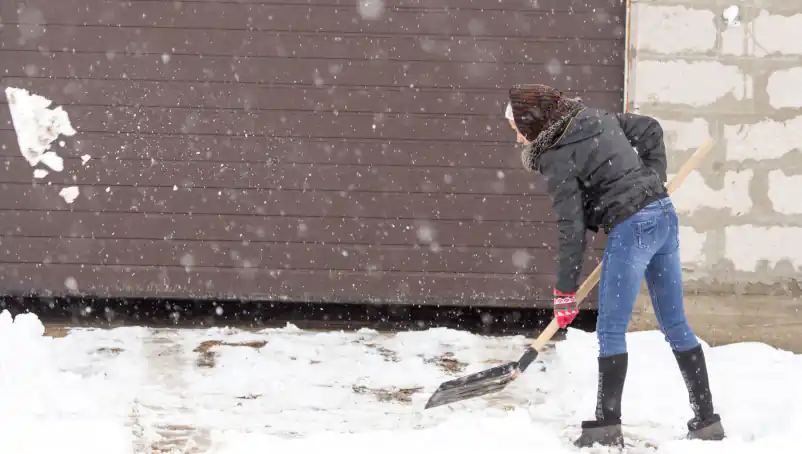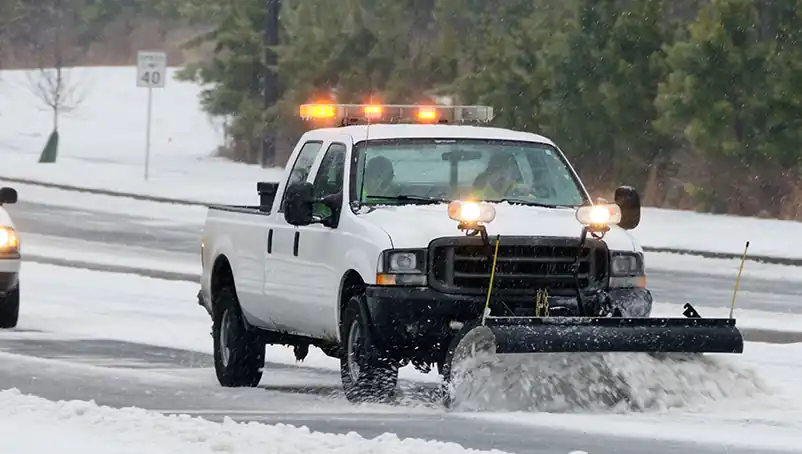There are things you can do to help keep a steady stream of clients coming your way year-round. Here are seven ideas to help you stay busy when the temperature starts to fall.
1. Plan for winter all year long
The best time to plan for cold temperatures is long before it arrives. “The time to start preparing for winter is in the summer,” says Tyler Milyard, Vice President at Western Constructors, a family-owned construction company in Colorado.
“As we’re leading up to winter or building a construction schedule, we may be building in accelerated timeframes…to make sure we get the concrete in the ground [before the cold weather hits],” he says. Smart winter construction planning can help crews avoid delays from frozen ground or curing issues.
And once the structure is enclosed work can shift indoors.
2. Line up smaller indoor projects
“Even the best plans don’t always work out,” Milyard says.
Even with careful planning, winter weather can throw projects off track. A backup plan, such as smaller indoor projects that you might avoid the rest of the year, can make it easier to keep crews working. Focus winter bids on indoor construction jobs such as smaller remodels, repair work or tenant improvements.
Milyard recommends diversifying services so that if new builds slow down, you still have revenue. That might mean taking on winter remodeling projects you wouldn’t normally prioritize, like basement finishing or interior updates. “There’s plenty of work if you need it or want it is what we’ve noticed,” he says.
3. Protect yourself, your workers, and your business from weather-related accidents
Generally, to avoid cold stress, OSHA advises that nonemergency work should stop when temperatures hit -25º to -35ºF or below with more than 10-20 mph winds.
Cold-weather construction brings added risks, from slips and falls to frostbite and hypothermia. “I would not say it’s ideal by any stretch,” says Milyard. “We analyze the risks and benefits of starting a new construction project during the winter with our clients. Depending on the situation, it may be better to wait until spring.”
If you do move forward with outdoor construction in winter, safety prep and precautions are essential. Some precautions to take could include:
- Weatherproof jackets, layered clothing PPE and insulated, slip-resistant boots for your workers.
- Keep walkways clear and dry to prevent injuries.
- Use portable lighting for better visibility on shorter days.
- Create heated break areas to help construction workers warm up.
- Monitor your fuel sources so you don’t burn down the structure while trying to heat it.
- Follow all hose and extension cord guidelines and keep heaters away from flammable objects.
- Protect your business and your workers with the right business insurance. Check that you have adequate coverage in case your business causes accidental property damage or a non-employee gets hurt (general liability insurance), you need to cover medical expenses for an injured worker (workers’ compensation insurance), or your tools need repair or replacement after being damaged, lost or stolen from a job site (tool and equipment insurance).
4. Use your trucks and equipment for seasonal services for contractors
Your trucks and equipment don’t have to sit idle when new builds slow down. Many contractors turn downtime into opportunity by offering seasonal services construction business owners can provide in colder months. Tasks like snow removal, holiday lighting or emergency repair work are all in demand during winter.
These kinds of winter contractor side jobs can keep cash flow steady while strengthening customer relationships. Even short-term services can build relationships and lead to larger projects down the road.
5. Invest in training and certifications during downtime
When construction work slows down, you can use the time to sharpen and expand your professional skills. Many contractors use this period for construction training to help them take on new types of jobs when demand rises again.
Contractor certifications can help build credibility and create opportunities for steady, year-round income. Some areas to consider:
- Electrical: Inspections, repairs and lighting installations are in demand year-round, but especially when older systems struggle under heavier winter loads.
- Plumbing: Cold weather often leads to frozen or burst pipes, but plumbing skills keep you in demand for maintenance and upgrades.
- HVAC: Winter heating repairs and summer cooling services can help ensure consistent work across all seasons.
- Carpentry: Interior finishing, cabinetry and repairs can keep projects moving when outdoor work slows.
- Energy efficiency upgrades: Skills in weatherproofing, insulation and smart-home installation are increasingly in demand for clients who want to cut energy costs.
- Project management or safety certifications: Leadership training and OSHA refreshers can prepare you to take on bigger jobs and safer crews.
Winter downtime is also a chance to build knowledge in emerging areas — like sustainable construction practices or solar installation — that can set your business apart in a competitive market.
Note: If you offer specialized services, you may need to get additional licenses and business insurance. Rules and requirements vary by state and local jurisdiction. Be sure to check them out before offering new services to your clients.
6. Focus on equipment maintenance
Cold weather can be tough on vehicles, tools and machinery. Use downtime for construction equipment maintenance can help prevent costly breakdowns when projects pick up again in warmer months.
Routine contractor equipment maintenance — such as checking fluids, testing batteries, replacing filters and inspecting hydraulic systems — can extend the life of expensive assets. Even smaller tools can benefit from calibration and cleaning.
Winter is also a good time to evaluate whether aging equipment should be repaired, upgraded or replaced. Preventive maintenance not only saves money over the long run but also reduces the risk of job delays once the busy season returns.
7. Strengthen customer relationships in the off-season
Slower months are the perfect time to focus on contractor marketing to help build project momentum in the months ahead. Staying connected with past clients and nurturing new leads can help keep your pipeline full once construction picks up.
Referrals remain one of the strongest ways to grow. Satisfied customers often recommend contractors they trust, so even small winter repair jobs can lead to bigger projects later. For newer businesses, join local networking groups or trade associations to open doors to future work.
Investing in construction business customer relationships during winter can not only build customer loyalty, but it can also position your company as the first call when clients are ready for spring projects.






